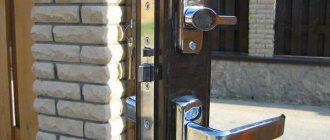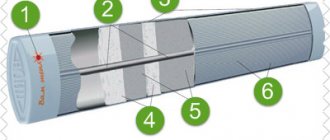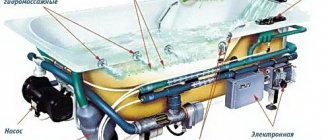Our expert’s opinion: a new rating of the most reliable and inexpensive surface pumps
Manual watering of plants is quite labor-intensive work. To simplify this task, purchasing an effective and most convenient pump will help. Today on the market there are many options for modern devices that supply water from a barrel. Before purchasing a unit, it is important to carefully study the types of devices presented by manufacturers, as well as familiarize yourself with the selection criteria.
Even if there is a water supply system on the site, it is not rational to use water from it for irrigation. Such water, as a rule, contains chlorine and other impurities that harm plants. In addition, watering is a wasteful activity, especially with a water meter. It is also not recommended to water vegetables and fruit crops with cold water, because plants may react negatively to low temperatures.
Considering these reasons, most summer residents accumulate water in different containers and allow it to heat up to the optimal temperature. Many owners collect rainwater in containers from drainpipes.
Previously, to water beds and other plantings, it was necessary to draw water from a tank with a bucket or watering can. This process required a lot of labor and time. However, technological progress does not stand still and today gardeners have the opportunity to use a barrel pump. This device greatly facilitates work on a summer cottage.
An effective installation is made in the form of a water pump. The pump perfectly pumps out water from any container (tank, barrel). The main advantages of the unit are its small size, excellent pressure and ease of operation. These criteria distinguish it from high-power surface or submersible devices.
A pump for irrigation from a barrel is an ideal solution for a household without a centralized water supply. The device has a simple operating principle: a pump that pumps water is installed on a barrel and watering is performed.
The installation weighs up to 4 kilograms, so it can easily be reinstalled on another container. The barrel pump operates almost silently.
The device is used not only for irrigation. It is convenient to add fertilizers directly to the barrel, mix with water, and then water with fertilizing. Solid particles can slip into the system and clog the unit. Installing a homemade filter directly on the container will help avoid this problem.
Thick gauze or tulle is used as a filter. The dimensions of the canvas should be larger than the volume of the water container. To begin, lay the gauze in a barrel, and then secure its edges to the container. The pump is immersed directly into the fabric bed. There is no need to be afraid that the pump will draw in the canvas, because the outlet of the installation has its own filter.
Experienced owners also use other tricks. They put a board on the barrel and hang a barrel pump from it. It is very important that the pump does not reach the very bottom of the container. The margin should be at least 10 centimeters.
Debris and sediment accumulates at the bottom of the container. However, the manipulations carried out will protect the system from clogging. This type of installation is used on tanks with a depth of 1.2 to 1.5 meters.
Criterias of choice
It should be noted right away that pumping equipment is determined by its technical characteristics. Namely: power, productivity, pressure. But there are also so-called operational characteristics that are directly related to technical ones:
- distance from the barrel to the farthest watering point;
- if the terrain on a summer cottage is uneven, then the height of the difference in the territory;
- the time during which the pump will be in operation;
- area for green spaces that require watering, and it is necessary to take into account what type of irrigation will be used: rain, drip or root irrigation.
Let's look at each technical characteristic separately and show how to make the right choice using simple mathematical calculations.
Performance calculation
Any technical device or equipment is equipped with a passport, which indicates its technical characteristics. The manufacturer installs metal plates on the pumps, where all unit parameters are also indicated. So, the pump performance has a unit of measurement: m/h, or l/min.
Pump performance is measured in l/min Source fontan.org.ua
Why is this indicator needed? For example, you need to water an area of 10x20 m, that is, an area of 200 m². It is believed that 1 m² of green space requires 3-5 liters of water for irrigation. Accordingly, if the irrigated area is 200 m², then for its moistening it is necessary to allocate: 200x5 = 1000 liters or 1 m³. This means that you need to select an irrigation pump with exactly this performance.
But here another question arises, which concerns time. That is, over what time period this volume of water will be poured onto the beds or under the trees. It all depends on what suits the summer resident. That is, it can be one day or one hour. For example, if you choose a pump with a capacity of 50 l/min, then 50 l of species will flow from the unit in one minute. It turns out that in 20 minutes the pumping unit will throw out 1000 liters, which is what you need.
You need to choose the right pump: strong watering or a small fountain Source hgcdn82.azureedge.net
Calculation of pressure
What does pressure mean? This is the height or distance of water supply, measured in meters, at the end point of which neither the pressure nor the productivity decreases. It should be noted that height, that is, vertical feed, and horizontal feed have different meanings. And there is a certain ratio between them - it is 1:10. That is, the vertical pressure is 10 times less than the horizontal one. For example, if the passport indicates that the pressure is 10 m, then this is its vertical value. This means that the unit will supply water horizontally over a distance of 100 m.
Now about the choice. Another example to understand what we are talking about. If the barrel is buried in the ground to a depth of 1.5 m, and the length of the watered bed is 35 m, then first of all it is necessary to indicate that the first parameter is the net vertical pressure, and the second should be measured ten times less, because it is horizontal . Accordingly, the required pump pressure is: 1.5 + 3.5 = 5 m. But here it is necessary to take into account the so-called losses along the path of water movement. This includes turns and bends of the hose, in which up to 20% of the pressure is lost. This means that to the resulting value of 5 m you need to add 35 x 0.2 = 7 m. The result is 5 + 7 = 12 m. Experts recommend adding another 10% here, so to speak, about the smell. Final result: 13.2 m. And this is the minimum figure.
The further the irrigation site is from the water source, the greater the pressure should be Source sadovij-pomoshnik.ru
See also: Catalog of country house projects
Power
With this characteristic everything is quite simple. Everything will depend on what type of irrigation a pump for supplying water from a container is required for: rain or drip. In the first case, a powerful unit is needed, in the second, a low-power one.
Where and at what price are they sold?
Devices of various types, with a pressure power of 13 or over 35 m, are sold in various stores specializing in the supply of technical equipment:
- 220 volt;
- Bison;
- Karcher;
- Makita;
- Vortex;
- Teplotek South;
- Tiu.ru;
- Ozone, Wildberries.
Prices in most stores correspond to the standard - low-power models can be purchased from 2000 rubles. Powerful devices cost 4,000 – 10,000 rubles. You can also purchase a ready-made irrigation system at a price of 5,000 rubles.
Types of tank irrigation pumps
So, having understood the characteristics of pumping units and the criteria for their selection, we move directly to the question of which pumps for irrigation from containers are on the market.
Superficial
This type of pumping equipment received its name only because its installation location is next to the water tank. That is, it itself does not come into contact with the water - it does not sink into it, that is, it is located on the surface.
Water intake is carried out using a hose, which at one end is connected to a pump, the second is put into a barrel or other container. And it doesn’t matter where the pump is installed. That is, above the water level, below or at the same level.
Surface irrigation pump Source pbs.twimg.com
Submersible
Again, everything is clear from the name. These watering devices only work, that is, perform their functions, when they are half or completely immersed in water. Some experts divide devices into submersible and semi-submersible for this reason, which is fundamentally wrong. All of them are submersible.
But it is precisely this category that has its own classification, in which much is not clear. For example, a pump for irrigation from a well. This is a classic submersible type. The unit is small in size, light in weight, and has a pressure of no more than 8 m. Therefore, it is used to organize water supply to houses if the water source is a well. That is, a hydraulic structure of small depth.
If the water supply is organized from a well, then a so-called well pump is used, the pressure of which reaches 200 m. This is a cylindrical device with a small diameter, that is, a circular cross-section, which is selected according to the size of the well. And this is where opinions differ. That is, the borehole variety is a separate category or subtype of submersible. In principle, for the common man this does not matter. You just need to understand that a standard submersible irrigation pump is used only for drawing water from a well, tank, barrel or other container. And borehole - only from a well. Notice the word "only".
Submersible irrigation pump Source mmedia.ozone.ru
See also: Catalog of companies that specialize in the development and installation of greenhouses
Let's move on to the classification. The next division is based on the method of pumping water. There are two positions here:
- centrifugal;
- vibration.
The first is the structure in which the shaft is installed. Impellers are mounted on the latter, which pump water due to the creation of centrifugal force. Hence the name of the pumps. The latter differ from the former in that they have a working organ - a membrane. It either rises up or falls down, due to which the pressure of the pumped liquid is created. It should be noted that the efficiency of the former is much higher than that of the latter, which is why these pumps are so popular.
The next section of the classification of submersible pumps is based on the degree of contamination of the pumped liquid. There are three positions here:
- with a low degree of contamination;
- from average;
- with a big.
The first group includes devices that can pump almost pure water. For example, when a barrel irrigation system is organized. The latter are better installed in wells. And the third group is pumps for irrigation from a pond, lake, river and other natural sources, where there is a high probability of collecting dirty water.
Irrigation pump with water intake from a pond Source elektroservis-rostov.ru
Let's sum it up
Whatever pump you choose, it will definitely make the watering process easier. You can easily and comfortably water your garden. At the same time, you will save your time and nerves.
Varieties of barrel pumps are extremely easy to operate and take up very little space. When choosing a model, it is important to pay attention to the engine power and technical characteristics that will meet your individual requirements.
Other varieties
So, the two types of pumping equipment indicated above are used today for watering summer cottages. But this does not mean that other species cannot be used for these purposes. In principle, any pump that pumps liquid media can be installed near a barrel and pump water from it. But, firstly, it is not always economically profitable. And, secondly, each pump has its own functional responsibilities.
But if there is a budget constraint, and there is some kind of pump lying around in the barn, then that can be used. True, you will have to take into account the design and functional features of the device. For example, is it possible to use a drainage pump for irrigation? There are no prohibitions. You just need to take into account the fact that, in terms of technical characteristics, these units are more powerful than ordinary household ones. For example, even the smallest drainage pump will drain a 200-liter barrel in a couple of minutes.
But if water intake is organized from a natural open reservoir, then there will be no equal to it. Firstly, it will serve faithfully for many years without breakdowns. Secondly, he is not afraid of either sand or small stones. The best option is to choose a unit with a chopper. It turns organic matter (garbage) from a reservoir into a mass that will rot in the garden and become fertilizer.
Drainage pump used for irrigation Source www.campingmanitoulin.com
Reviews
Owners of submersible drainage pumps praise them for their quietness, resistance to voltage surges and limestone deposits. The devices are durable even with continuous long-term operation of several months. There are complaints about insufficient pressure (they didn’t calculate it when purchasing) and, less often, about the impeller jamming.
So. The main thing to understand is that the drainage pump is designed to quickly pump a lot of water from a shallow depth. For a vegetable garden, you need to do the opposite - deliver water from afar, from great depths so that the pressure does not wash out the beds. When buying a drainage pump, make sure that the performance is small and the pressure is sufficient for the size of a particular area.
A submersible pump is a necessary device for every summer resident and country resident. Submersible pumps for watering the garden: types of pumps, water sources, unit prices.
Submersible pumps for wells with automation, their types and purpose - read in this block.
Barrel pumps
It would be strange if companies involved in the production of pumping equipment did not produce compact models designed specifically for watering from a barrel. They were called that - barrel pumps.
In fact, this is a submersible type unit, which contains two elements that are absent in other varieties:
- fastening with which the hose and trigger are attached to the edge of the barrel;
- a starting device made for ease of operation of the pump itself, that is, it is a button to start and stop the device.
Barrel pump for irrigation Source naddosdelat.rf
Today, barrel pumps on the market are not represented by the widest range. But there are models popular among summer residents that meet all expectations both in price and quality of use. These are models called KARCHER and GARDENA. Both types of pumps have their own model range, in which the devices differ from each other in the technical characteristics described above. Therefore, choosing the required option in terms of productivity, pressure and irrigation area will not be difficult.
Where does the water come from?
The main factor influencing the choice of pump is the source of water intake. Warm and settled rainwater is optimal for irrigation. Unfortunately, one two-hundred-liter barrel into which it is collected is not enough to irrigate even a small garden. Therefore, the most often used option is to collect water from wells and boreholes.
Garden plants do not like cold water from such sources, so many gardeners use a compromise option. They pump cold water from a well into a barrel, let it warm up during the day, and water the garden in the evening.
The happiest are those who have an artificial pond on their property, a river flowing nearby, or a lake. The water in such sources is warm and suitable for irrigation at any time of the day.
Briefly about the main thing
To this day, summer residents still use watering cans for watering. But scientific and technological progress does not stand still. Today, criteria such as ease of use and accurate calculation of the volume of water for irrigation come first. After all, many plants require a certain percentage of moisture. That is why gardeners are increasingly purchasing pumps. Moreover, in the household sector, their range has recently increased significantly, which allows you to make the right choice.
Ratings 0
Surface aggregate
Such pumps are designed to lift liquid from shallow depths (within 10 meters). They are installed on the surface, immersing only the water intake hose into the reservoir. Since the device pumps liquid by suction, it is highly undesirable to use rubber hoses to remove liquid: under the influence of rarefied air, the walls will simply shrink, preventing the movement of water.
Tip: To reduce vibration during operation, it is better to place the surface water intake unit on a thick rubberized mat.
Surface pump
The undeniable advantages of submersible devices are ease of connection and the ability to produce a powerful jet to a height of up to 50 meters, which greatly simplifies watering large areas. A significant disadvantage of this type of device is their “growling”. Therefore, surface units are often placed in closed outbuildings.











